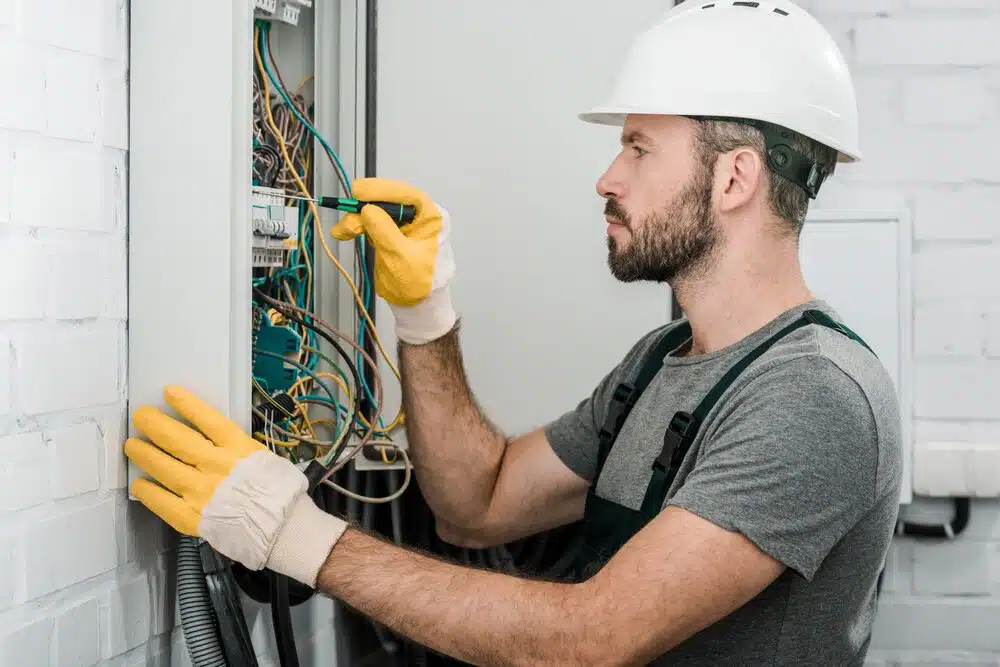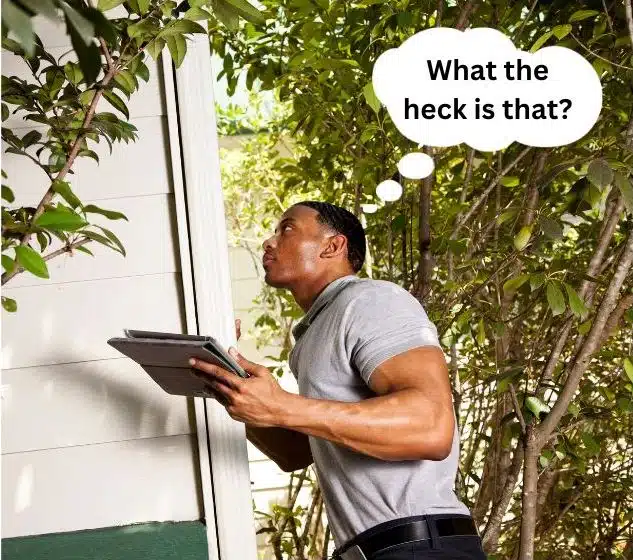You may have seen the television show “Storage Wars.” When rent is not paid on a storage unit, the contents can be sold by auction. Before each unit is auctioned, bidders are given a few minutes to inspect the contents, but only from the doorway. The bidders are gambling on the general appearance of only the items they can see. Many times it’s a total bust!
This is similar to buying a Bakersfield home without a home inspection. You should not buy a home after a brief walk-through without any further investigation. You should know exactly what you’re buying.
Professional home inspectors are house proctologists investigating all the dark places that homebuyers may never see. A thorough home inspection will shed light on the dark areas of current and future concern which can then be rectified for peace of mind.
Let’s inspect home inspections in Bakersfield.
What’s A Home Inspection?
A home inspection is a comprehensive evaluation of a home’s condition. A home inspector methodically examines the interior and exterior of the house to document and photograph any needed repairs or other issues.
A home inspection only reports the condition of the home, not the value, which is done by a home appraisal. Conversely, an appraisal does not evaluate the nitty-gritty details of a home’s condition but does note a home’s overall condition.
Are Home Inspections Required?
No, home inspections are not mandatory but they are highly recommended. In fact, a buyer who does not want an inspection must sign a waiver acknowledging that it’s against the advice of the Realtor. You’d be crazy not to get one.
The cost of a home inspection is the best money you’ll ever spend and is minor compared to the down payment and closing costs. A few hundred bucks will likely save you much more, and possibly thousands if any major repairs are involved.
Even if you know the sellers, they may be honest and trustworthy but not know all the issues with their home. They rarely do.
Buying a home is a major investment so don’t flush money down the toilet!

Steps In The Home Inspection Process
There is more to the home inspection process than what happens on inspection day. As the buyer, there are certain steps you can take before and after the inspection to ensure you have the information you need about the home you’re buying.
1. The Home Inspection Contingency
An inspection contingency (or investigation of property contingency) is a clause in the California Residential Purchase Agreement that provides time for the buyer to perform all inspections. The home purchase is contingent on the results of the home inspection, which allows buyers to back out of the deal or ask for certain repairs.
In Bakersfield, the default time to complete the inspection and remove the contingency is 17 days but it can be shorter or longer if both parties agree. To meet the contingency deadline, an inspection should be scheduled soon after escrow is opened since there may be additional inspections that stem from the general inspection.
For example, if the initial inspector recommends further evaluation by an electrician, the buyer must arrange for another inspection to gather further information – all within the contingency period.
2. Hiring A Home Inspector
A top Bakersfield Realtor should ask if you know an inspector you would like to hire. If not, most Realtors can refer home inspectors they trust and work with regularly.
To find an inspector on your own, seek recommendations from friends and family or search online for a top Bakersfield home inspector. Do some research, check reviews, and make sure the inspector is licensed and insured.
To kick off the process, the inspector will send you an agreement to sign that outlines the scope of service and responsibilities of the inspector.
3. Paying The Home Inspector
The homebuyer almost always pays for the inspection because it protects them from buying a home with major issues or too many issues. The inspector will usually request payment after the inspection but before providing the inspection report.
4. The Home Inspection
While it’s not required to attend the home inspection, it’s highly recommended. Most inspection reports are highly detailed with descriptions and photos of all issues, but it’s very helpful to see issues and ask questions onsite. An inspector can also provide useful information about the house unrelated to needed repairs.
Most homes have a lengthy list of flaws, most of which are minor and easily fixed. Buyers should pay the most attention to more severe issues that are potential deal breakers, which must be repaired or the deal is sunk.
Note that most inspectors prefer to meet with homebuyers after completing the inspection, at which time all issues can be explained. Otherwise, the buyer is standing around and waiting for a few hours.
5. The Home Inspection Report
A couple of days after the home inspection, the buyer will receive a written report detailing the home’s features and any problems that may need attention. Inspectors use various reporting formats which are divided into sections covering all rooms, spaces, and mechanical systems.
Many first-time homebuyers feel overwhelmed by an inspection report since every flaw is noted, no matter how minor. Reports for older homes can easily be 70 – 100 pages.
The reports draw special attention to safety hazards and issues that need immediate attention. These issues may have already been discussed at the home, but inspectors are always available to clearly explain their findings.
A top Bakersfield Realtor will review the inspection report with the homebuyer and identify what repairs the seller will request. This often depends on buyer and seller expectations that were set before escrow. For example, a home listing might state upfront that the seller is only willing to make minimal repairs, so the buyer must decide whether only a few repairs are acceptable.
6. Requesting Repairs
For California Realtors, the “Request for Repair” form provides clear sections for the buyer’s requests based on a Home Inspection Report and a Pest Control Report (Termite Report). The buyer can ask for any combination of the options below:
- Request specific repairs from the home inspection report.
- Request Section 1 and/or Section 2 work from the pest/termite report.
- Request that the seller credit the buyer some amount at closing.
- Request that the seller drop the purchase price.
As a buyer, you are typically advised to ask for repairs you can’t live without and repairs you feel strongly about. Most sellers are willing to accommodate buyers as long as buyers are being reasonable. Asking for every issue in an inspection report would not qualify as being reasonable, since many issues can be fixed by hiring a handyman for a day or some weekend DIY projects.
If you’re comfortable handling repairs on your own, you might ask the seller to credit you for the cost of repairs you want. You can either request a ballpark number and let the seller respond, or you can obtain repair quotes and submit them with the repair request.
You can also ask for the seller to drop the sale price, but a closing credit means more cash in your pocket, so dropping the price is the least used option.
See below the top portion of the Request for Repair form.

7. Making The Repairs
Once the buyer and seller have agreed on repairs, who handles them? Usually, the seller organizes the repairs with help from the listing agent. However, this often depends on the dynamic among the buyer, seller, and Realtors.
For example, the buyer or buyer’s agent may want specific contractors to handle certain repairs. Or Realtors will discuss getting the best quote on a certain repair. In these cases, all parties will work together to complete the mission.
Home Inspection Checklist
A Bakersfield homebuyer should have a basic understanding of what a home inspector will examine. This checklist will let you know what to expect and help you ask the right questions.
Exterior
- Foundation is checked for material (concrete slab, cinder block) and whether there are cracks, broken floor joists, etc.
- Trees and shrubs should be well-trimmed with space from the house.
- All ground should slope away from the house. No standing water in any area.
- Exterior walls and siding should be straight with no cracks.
- Windows and door frames should be square without cracks allowing water intrusion.
- Siding should show no damage and have proper clearance from the ground.
- Bricks should show no damage or cracks in joints.
- Paint should not be peeling or worn away.
- Roof shingles should not be missing, broken, or decaying.
- Proper flashing should be in place around roof joints.
- Gutters should be secure and clear of debris.
- Chimneys should be straight and intact.
- Driveways and sidewalks should not have major cracks or uneven surfaces.
- Porches, decks, steps, and handrails should be even and secure without rot.
- Fences should not be leaning or show significant rot.
- Garage should be inspected for all the above and a working door (opener).

Interior (General)
- Walls, ceilings, floors, and baseboards should be straight without visible damage.
- Damaged carpet, tiles, or wood flooring should be noted.
- Windows and doors should open, close, and lock easily without drafty spaces.
- Switches, lights, and fans should operate properly.
- Fireplace should have no cracking, gaps, or staining.
- Smoke detectors and carbon monoxide detectors should work.
- Stairway steps, risers, railings, and spindles should be solid.
Kitchen
- Plumbing under the sink should show no leaks or corrosion.
- All appliances should work, including the stove, oven, microwave, dishwasher, and garbage disposal. Refrigerators are not usually included in a sale.
- Exhaust fans should vent to the outside.
- There should be adequate water pressure to sink and proper draining.
- Counters should not have damage or missing tiles with proper caulking.
- All cabinets and drawers should function properly.
Bathrooms
- Plumbing under sinks and inside access panels show no leaks or corrosion.
- All fixtures should have adequate water pressure.
- Sinks, tubs, and showers should drain properly.
- Toilets should flush and fill properly, and be secured to the floor.
- There should be no evidence of leaking anywhere.
- All cabinets and drawers should function properly.
Electrical Systems
- Wiring type should be noted and should be in good condition.
- Service panel should have normal capacity with proper breakers and labeled.
- Cables should be secured and attached properly.
- Two-prong and three-prong outlets should match the wiring type.
- Exposed wiring should be in conduit. Should be no exposed splicing.
- There should be a sufficient number of electrical outlets with proper spacing.
- Ground fault circuit interrupter (GFCI) outlets should be installed in bathrooms and kitchens, and at ungrounded outlets.

Plumbing
- Pipes should show no leaks or corrosion.
- Water heater should be double strapped.
- Water heater should show no signs of damage or corrosion.
- Water heater lines and pressure the relief valve should be installed properly.
- Water pressure to home should be within acceptable range.
Cooling & Heating Systems (Mechanicals)
- Air conditioning and heating units should operate properly.
- The thermostat should be properly installed and responsive.
- Condensate drain lines should be properly routed.
- Refrigerant lines should be insulated.
- All air filters should be clean.
- Air conditioning and heating vents should be in all rooms.
Attic
- Staining from the roof will be scrutinized for existing leaks.
- The rafters, trusses, and joints should not have damage or improper spacing.
- There should be proper ventilation through the roof and eaves.
- Insulation should be adequate and properly installed.
- Electrical wires should be in conduit and enclosed junction boxes.
- Plumbing, wiring, or ductwork in the attic should be in good condition.
Note that this is not a complete list. An inspection report will be more comprehensive.
Specialized Inspections
Here are some of the most common specialized inspections that are often recommended by the main inspector or required by lenders.
- A pest or termite inspection is very common in Bakersfield, for about $75.
- Also common is a basic pool inspection, which adds another $75.
- A specialized HVAC inspection is common, which should cost under $150.
- Mold detection might be recommended, which should cost under $200.
- A sewer line scope might be recommended, which should cost under $300.
- Septic tank inspections are highly recommended where applicable. There are separate fees for inspection, pumping, and certification. Call a local septic service for more info.
- Water well inspections are highly recommended where applicable. Call a local well service for testing and certification.
Some FAQs About Home Inspections
Are you still thirsting for more knowledge about home inspections? Here are a few frequently asked questions.
What’s The Cost of a Home Inspection?
In Bakersfield, the cost of a home inspection typically ranges from $300 to $500 depending on the size and location of the home. The cost increases for luxury homes over 5,000 square feet.
How Long Does a Home Inspection Take?
Most home inspections take 2 to 3 hours to complete. Very large homes and estates can take longer.
Are Some Repairs Mandatory?
A seller is not required to make any repairs. However, some repairs are required by lenders like safety hazards. Other examples include replacing broken appliances, concealing exposed wiring, or installing missing handrails on stairs.
FHA-backed loans have more requirements than conventional loans. A seller may not want to make certain repairs but might not have a choice if a mortgage is involved.
What Are The Most Common Problems Found By a Home Inspection?
In Bakersfield, common problems are related to roofing, the HVAC system, faulty electrical wiring, water/plumbing damage, and dry rot (or termite damage).
How Can I Prepare For a Home Inspection?
As a buyer, you just need to show up and pay the inspector. As a seller, you’ll already be prepared if you’ve used our handy home seller checklist. Other basic preparations include removing pets from the home, making sure all utilities are on, and ensuring easy access to all areas of the home including the attic.
How Does a Home Inspection Differ From The Seller Disclosures?
A home inspection evaluates the current condition of a home and attempts to expose all issues, both large and small. The seller may not even be aware of most issues.
On the other hand, Seller Disclosures are documents that list past or present issues that the seller is aware of, along with other details about the property.
The Finish Line
Home inspections are all about reducing risk. You don’t want to roll the dice on what repairs you might face after your home purchase. Moving into your new home should be a time of celebration, not a mad scramble to repair a leaky roof – then pay the nasty bill.
Find a qualified Bakersfield home inspector as soon as escrow is opened and refer to the advice we’ve provided. You can uncover any hidden issues and gain peace of mind.
Contact Property Wonk to connect with a top Bakersfield Realtor or get a personalized home value estimate.


